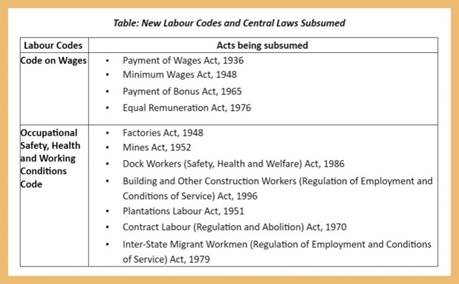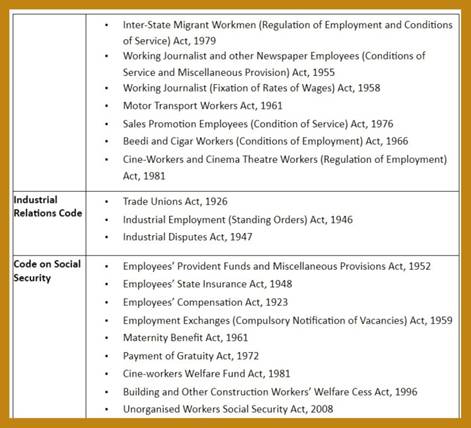Free Courses Sale ends Soon, Get It Now


Free Courses Sale ends Soon, Get It Now



Disclaimer: Copyright infringement not intended.
Context
Labour
Subsumed Labour Codes


NEW LABOUR CODES
The four labour codes -- the Code on Wages, Industrial Relations Code, Social Security Code and the Occupational Safety, Health and Working Conditions Code -- are set to replace 29 labour laws.
Code on Wages
The Code on Social Security
The Code on Industrial Relations
The Occupational Safety, Health And Working Conditions (OSH) Code
Read about the Labour Codes in detail here: https://www.iasgyan.in/blogs/new-labour-codes-decoded
https://epaper.thehindu.com/Home/ShareArticle?OrgId=GAIA6F82C.1&imageview=0
© 2024 iasgyan. All right reserved